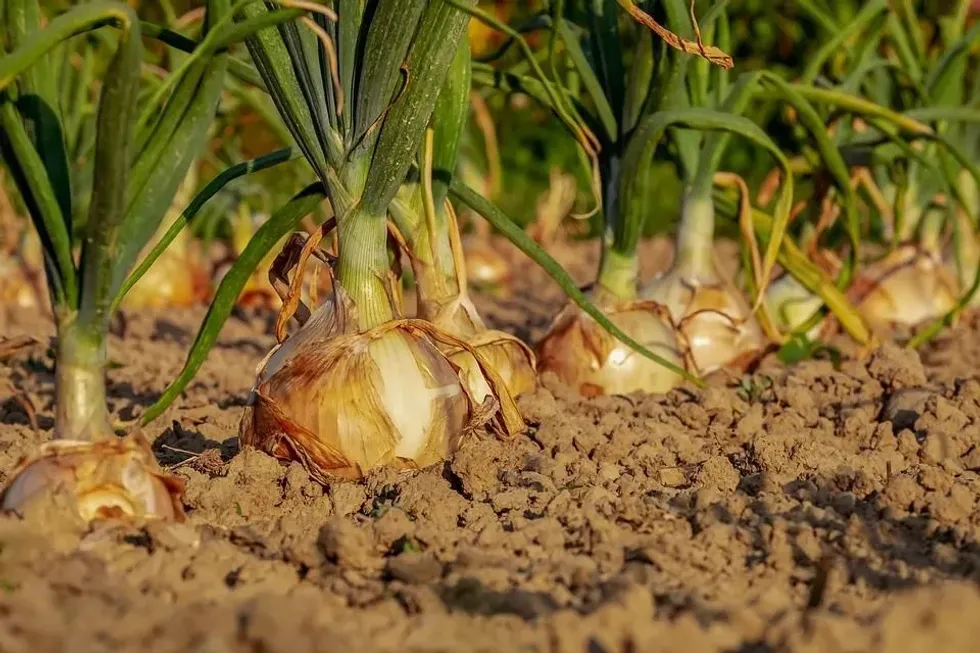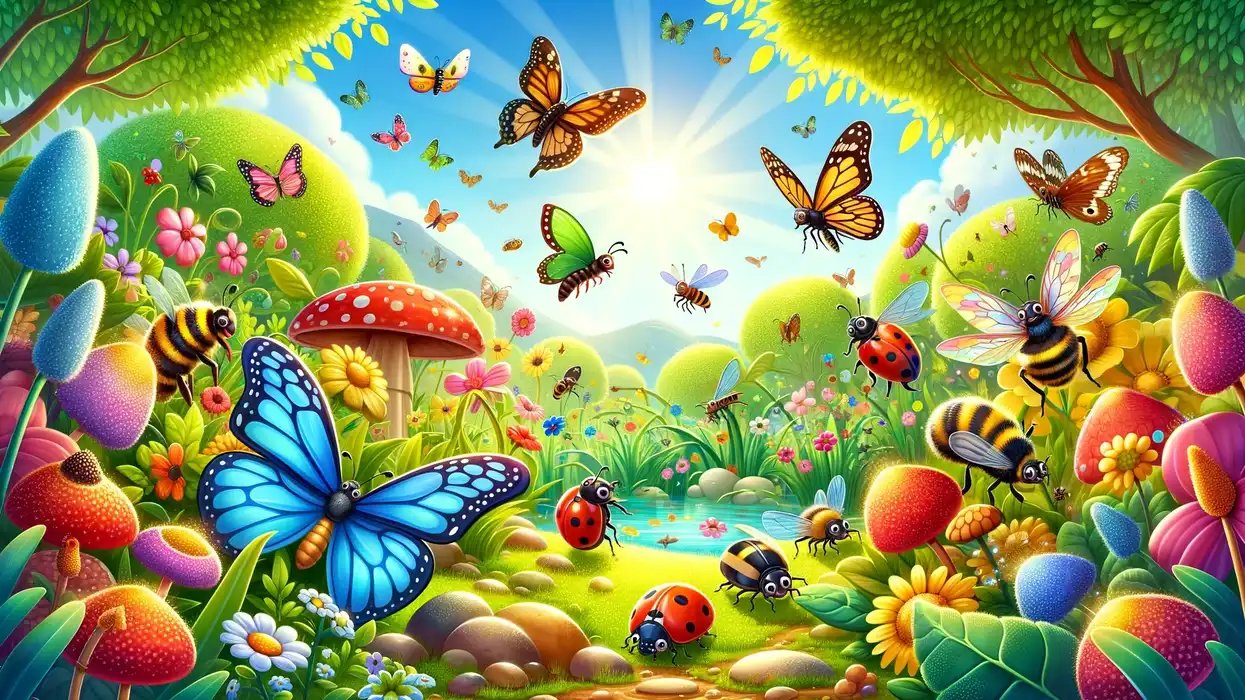Bulb onions are a cool-season vegetable grown across the world.
Onions are biennials and require two seasons to complete their life cycle. In the first season, they form onion bulbs underground that are harvested. In the second season, they produce flowers and seeds.
The bulb of the onion plant grows underground while the onion tops grow above the ground. The onion bulbs are used in numerous culinary dishes for their flavor and taste.
The Classification of Onions
Cultivated onions are the most common and beneficial vegetable of the Allium family. The other closely related vegetables of this family comprise of garlic, shallot, scallion, chives, and leek.
The scientific name of the common onion or bulb onion is Allium cepa. The scientific classification of the onion kingdom is as follows, Kingdom: Plantae, Phylum: Magnoliophyta, Class: Liliopsida, order: Asparagales, family: Amaryllidaceae, subfamily: Allioideae, and genus: Allium
Onion As Modified Underground Vegetable
There are three types of onions depending on the amount of daylight they require to produce bulbs. Long day onions require 14-16 hours of sun and are planted in late winter or early spring. Day-neutral onions require 12-14 hours of daylight and are cultivated in mid-winter to early spring.
Short-day onions are grown everywhere on the globe and require 10-12 hours of light. They are cultivated during fall to late spring (September to December) and perfect to grow in Florida or Washington.
Onions are grown from seeds, onion sets, or transplants. The best time to plant onion seeds is winter to early springtime in a garden or a pot. While potting soil, it is important to use well-drained, loose soil that is nitrogen-enriched and the temperature should be around 77 F (25 C).
Full sunlight is required to grow onions. The onion plant sprout between 7-10 days. Gardeners harvest yellow onions after 8-10 weeks, which can be consumed as spring onions or scallions.
Onion sets are small. Dry onions from the previous season should be pushed deep into damp soil where onion tops grow above-ground and bulbs and roots grow underground. After harvesting, fresh bulbs are cooked or eaten raw in salads.
Onion plants are transplanted the same season they are germinated. Usually, their green tops are trimmed down to 2.8-3.1 in (7-8 cm) for sturdy growth.
They are planted 12-18 in (30.5-45.7 cm) apart so the bulbs can expand fully. When bulbs completely expand, they start to pop out of the ground as the plants push the soil away.
As onion tops begin to turn yellow and fall, it is an indication that they are ready to be harvested. So, if your onions are popping out of the soil it's a sign they are maturing.
You can also grow onions from an onion. Slice off the bottom with the roots intact. Then plant it in moist soil, preferably in a pot, with the roots in the soil. Remember to keep the soil bed moist and sufficient sunlight is necessary. Green shoots will appear in a few weeks.
Types Of Onions
There are mainly three types of cultivated onions, yellow, white, and red onions all of which grow underground. Yellow onions are the most common type of onions. They have yellow skin and white flesh and they smell pungent because of their strong flavor.
White onions are gently flavored and have white skin and flesh. Red onions, also called purple onions have reddish-purple skin and white flesh. Red onions have a mildly sweet flavor that grows underground. All of these bulb onion varieties are harvested year-round.
The growth of the primary three types of onions differs depending on the climate and gives creates new sub-types. Some of those are listed below.
Bermuda onions are one of the big onions with white flesh and a mildly sweet flavor. They are cultivated only in springtime.
Chinese leeks or chives look like green onions but are mild in flavor.
Cippolini onions are lightly sweet with a flying-saucer shape. They come from Italy and are harvested all year.
Egyptian onion, tree onion, or walking onion, has a strong flavor with edible leaves and bulbs. They are available from summer to autumn.
Gardeners harvest yellow onions at their early stage which is known as green onions. Both the shoot and onion bulbs are edible in green onions.
Leeks are like green onions with a delicate flavor. They have an onion-like flavor and the leaves can be eaten.
Maui onions are sweetly flavored, saucer-shaped, golden-skinned, and full of moisture. They are harvested from April through June but are available all year.
Pearl onions or button onions are delicately sweet, small onions and used mostly for pickling.
Red baron scallions have red onion bulbs and green leaves. Strongly flavored, they are mostly available in spring and summer.
Scallion or spring onions are commonly used in salads because of their delicate flavor. They have larger bulbs than green onions.
Shallots are mildly sweet onions with small bulbs and are commonly described as a cross between onion and garlic.
Walla Walla onions are sweet and named after Walla Walla County in Washington, where they are cultivated.
What is an onion stalk?
The onion stalk is the steady part of the stem that stays above ground and gives the plant a steady structure. Surrounded by hollow leaves, the stalk blooms and nurtures the plant seeds' as well.
Edible onion stalks are attached to bulbs of onions, which is also a part of the stem that grows underground. It makes onions both an underground and above-ground vegetable.
Onion stalks are used in cooked food like omelets, burritos, quiches, quesadillas, baked potatoes, different chicken dishes, and millions of other dishes across the world. The flower stalk can also be transplanted for continuing the natural process of the plant's life cycle and collecting seeds.








